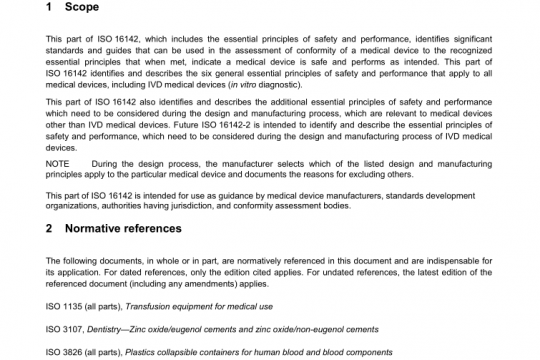AAMI ST72 pdf free download
AAMI ST72 pdf free download.Bacterial endotoxins – Test methods, routine monitoring, and alternatives to batch testing.
3.8 endpoint (gel clot): The last point in a series of dilutions or concentrations of a test or control solution for which a positive reaction for bacterial endotoxin is observed. 3.9 enhancement: BET anomaly in which a non-endotoxin related factor, usually attributable to a characteristic of the test sample, elicits a test reaction greater than the amount of endotoxin present. 3.10 gel-clot technique: BET methodology that quantifies or detects endotoxin on the basis of a clot- producing reaction proportional to the interaction of LAL and endotoxin. 3.11 geometric mean endpoint: The average of the logarithmic values of the endpoints from replicate dilution series converted back to a base 10 number used to establish the central tendency or typical value from a test solution. 3.12 inhibition: BET anomaly in which a non-endotoxin related factor, usually attributable to a characteristic of the test sample, elicits a test reaction less than the amount of endotoxin present. 3.13 inhibition/enhancement test: Test used to determine whether a particular sample contains factors that diminish its accuracy by introducing enhancement or inhibition into the test system. 3.14 investigation test: Re-analysis of a sample extract 1 preparation to verify the original result. 3.15 LAL reactive material (LAL -RM): Any non-endotoxin compound that will activate the LAL and cause enhancement. 3.16 LAL reagent water (LRW): Purified water or other qualified solutions employable as a solvent, diluent, and/or extractant in a BET that must be non-reactive and do not elicit interference in the methodology in use. 3.17 lambda (N): Labeled sensitivity of an LAL gel-clot reagent expressed in EU/mL or, for chromogenic or turbidimetric tests, the lowest point (endotoxin concentration) on the referenced standard curve.3.18 Limulus amebocyte lysate (LAL): Reagent extracted from amebocytes taken from hemolymph of the horseshoe crab, Limulus polyphemus or Tachypleus tridentatus (TAL), which reacts with endotoxin, to form a gelatinous clot and is used to estimate endotoxin levels in BET methods. 3.19 lipopolysaccharide: Gram-negative bacterial cell wall component typically composed of lipid A, a core polysaccharide, and an O-side chain. 3.20 maximum valid dilution (MVD): Maximum amount a sample can be diluted relative to the sensitivity of a BET in which the specified test endotoxin limit can be detected. 3.21 out of specification (OOS): A sample with a valid BET test result that exceeds a product endotoxin limit specification. NOTE The term O0S applies only within the context of this document and does not imply compliance with any other regulatory guidance dealing with 00S results, such as the FDA’s Investigating Out-of-Specification (O0S) Test Results for Pharmaceutical Production. 3.22 non-pyrogenic: Term used to describe an item or product that does not induce a fever. NOTE May also be used to describe and label health care products that contain endotoxin levels less than specified limits. 3.23 product endotoxin limit: Maximum allowable level of endotoxin specified for a product. 3.24 product realization: All processes consistent with the quality system requirements that are needed to develop, manufacture, and deliver the finished product. 3.25 pyrogen: Any substance that induces a fever. 3.26 pyrogenic: Term used to describe a health care product that induces a fever. NOTE May also be used to describe a health care product with an endotoxin level above specified limits. 3.27 reference standard endotoxin (RSE): USP Endotoxin Reference Standard that has a defined potency of 10,000 USP EUs per vial. 3.28 retest: Test of additional product samples from a previously tested batch. AAMI ST72 pdf download.
Other IEC Standards
-

ANSI AAMI ISO 16142-1 pdf free download – non-IVD medical devices and guidance on the selection of standards
AAMI standards list DOWNLOAD -

ANSI AAMI ISO 16142-2 pdf free download – General essential principles and additional specifc essential principles
AAMI standards list DOWNLOAD


